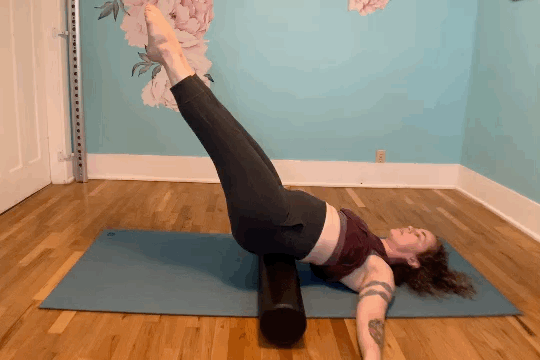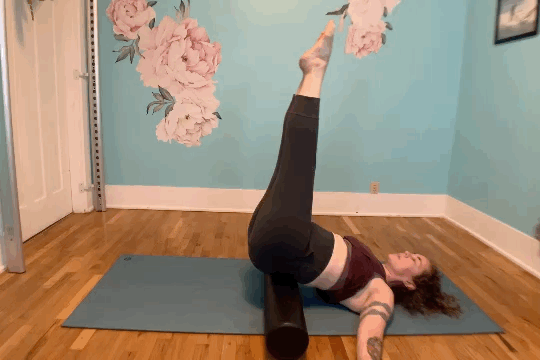Loafing Around
So. Are you a loafer?
Not like a person who eats a lot of bread (not that there’s anything wrong with that!), I’m talking ab loaf here. For those of you who are unfamiliar with the term, bread loaf or ab loaf is when your abs pop up or protrude or LOAF when you are engaging them.
I got a great question from a friend today about how to fix the loaf, and rather than send them a dissertation length email about it, I figured I’d just write a blog post and share the love with all y’all.
Let’s begin by talking about what’s actually happening when you loaf, and then we can discuss how to fix it.
And I’m going to preface everything I’m about to talk about by saying that bodies are super complicated. I’m going to talk about common denominators and generalizations in this post. I’m doing my best to keep things accessible. Things might be more complicated for your body!
What is the loaf?
Usually when you loaf it is a sign of Rectus Dominance. That means that your rectus abdominis, the six pack muscle, is trying to do too much and is compensating for other muscles not doing enough. Often, it’s your transversus abdominis, or TVA, that’s struggling to keep up in this scenario. Your TVA is your innermost layer of abdominal muscle that wraps around your waist like a sheath or a corset. It connects your ribs to your pelvis, and helps to stabilize your lumbar spine. When it’s active, it gets tight and pulls everything IN.
Try this: Imagine you’re wearing a wet t-shirt. Take a deep breath, and as you exhale, try to pull your skin away from the wet shirt. Did you feel that tight squeezy feeling in your abs? That’s the TVA.
So, if the TVA pulls everything in, and when you loaf everything is pushing out, stands to reason that the TVA isn’t working when you loaf. Yeah?
Not sure if you’re a loafer?
Try this: If you have a foam roller or a yoga block, put it under the top of your pelvis. If you don’t, you can elevate your hips with a pillow or just try this laying flat. Straighten both legs towards the ceiling and rest your hands on your stomach. Take a deep breath and as you exhale, begin to slowly lower your legs towards the floor. As your legs lower, do you feel your belly bulge up into your hands? That’s the loaf!

Try it again, this time think about that squeezy feeling of the TVA. Was it different?

Now, there are lots of reasons why you might be rectus dominant. But a really common one, especially for circus folk, is from tucking too much. Think about your hollow body drills. Think about your leg lift drills. Think about every coach who has ever told you to tuck more. TUCK!!!
But Lauren, you say, that’s how you do abs, right? Tuck and press your back into the floor!
No, friend. That’s how you get rectus dominance.
The job of your rectus is to flex or round the spine. It pulls your ribs towards your pelvis, and your pelvis towards your ribs. And for the most part, that’s all it’s supposed to do. When you tuck and press your back into the floor to do abdominal work your rectus is the main muscle that you are recruiting because the tuck that you did is flexing your spine. Pressing your back into the floor is helping you to stabilize your spine, so you’ve just created a situation where your body doesn’t feel like it needs the TVA to do that job. If you do this same thing over and over again, you’re teaching your body that stabilization comes from the rectus tucking the pelvis, not from the TVA.
And Ta-Da! Rectus dominance has been achieved!
The problem with this is that when your rectus is trying to stabilize your pelvis and spine it’s not going to be very good at what it’s supposed to do, which is flex your spine. It’s used up all it’s juice doing the wrong job! And then things like inversions and leg lifts can get really hard. And when you’re doing things like inversions and leg lifts in rectus dominance, it’s going to make your hip flexors and quads over work like the dickens, which will make your hips really tight and can contribute to fun stuff like back and hip pain. If you notice that your low back hurts after training, this very well may be the issue!
So, how do we fix it?
The big picture answer to this is that you need to learn how to stabilize your spine in neutral. That’s pilates speak for teaching your TVA to support your spine in its natural curvature instead of flattening your low back and tucking the pelvis.
The unfortunate answer is that there is no one exercise that does this. Rather, you have to retrain your whole core to work in this new way. And that takes time, and more importantly, intention and the willingness to work slowly. When you are doing this type of retraining, not only are you trying to strengthen something, you’re also rewiring the way that your brain talks to your body. And that just takes time!
But never fear! I won’t leave you with nothing! Here is a video to take you through the basics of TVA activation and some exercises to get started. Then, you have to use the techniques that you learn in it All. The. Time.
The upside of working this way? Less back pain and things like inversions might start getting easier!
If you want a more in depth explanation of neutral spine, check out this tutorial I made. There’s more handy exercises in it, too! (and probably many of the same exercises, honestly)
Looking for more ways to do awesome shit without getting injured? I send out weekly movement tips and videos to help your body get stronger AND SMARTER!
Sign up for my mailing list to get in on the action.
